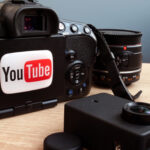
Technology has advanced rapidly so that a new TV becomes obsolete within no
time. For this reason, when you see some amazing features in the newest
models, you tend to want to order a new TV.
If you are planning to buy a new TV for your home or office, then you might
find yourself confused with the huge variety of televisions available at the
store and online. Here is a complete guide to choosing the best TV.
Factors to consider before buying a TV:
Screen Size
The size of the room in which the TV will be placed is important when
considering screen size. While a large living room might allow you to consider a
variety of TV sizes, a smaller or angled room will require an appropriate field of
vision and screen quality.

Type of Screen
Customers can get confused when salespersons use terms such as LCD, LED,
and QLED to name a few. These terms refer to the type of screen. These days,
the technology most widely used is LED (Light Emitting Diode).
A better bet if you’re in the market for premium viewing experience is an OLED
TV or Quantum Dot LED TV. These will cost more than standard TVs, however
they will provide the best colors, contrast levels, and more.

Correct Resolution
Brands usually claim that their TVs have high-definition visuals because they
are ‘HD-Ready’, but in reality these TVs have 1280720 pixel resolution, which is
not enough for today’s HD world.
For full-HD or 1080p viewing, you need a high-resolution TV. If you plan to
binge on Netflix or Amazon Prime, you need a 4K TV because these TVs have
four times as many pixels as full-HD screens. The 8K TVs are currently more
expensive, but the content available is inadequate to take full advantage of
them.

Brand
There are various factors to consider, other than the brand name, when
considering which TV to buy. Brands such as Micromax, Vu, Intex and Noble
offer good value for money, and they can be good options if you don’t want to
spend too much.

Display type
In today’s televisions, LCD/LED and OLED display types are extremely
popular. A large majority of LCD LED TVs are constructed essentially of LED
panels that light only on the edge of the screen, hence their name.
With an array of LEDs directly behind the screen, what you have will be able
to light or darken specific zones in any scene, known as active dimming or
local dimming.
The quantum dots technology used in these TVs utilizes an added layer in
the LCD panel, thus creating a picture with increased brightness and detail.
This technology was once found in high-end and premium models only, but
is now being incorporated into moderately priced TVs as well.
The more expensive stuff is OLED TVs. OLED TVs replace the LCD backlight
with an organic LED layer that allows for true black images and incredible
levels of contrast. OLED TVs are produced by manufacturers such as LG,
Sony, Philips and others.
With the introduction of 8K panels, the price of OLED panels, which have
best-in-class contrast and deeper blacks, is declining, though it may still be
more expensive than LCD televisions.
OLED TVs are also renowned for ‘ghost’ images which occur when an image
appears on screen for an extended period of time. QLED TVs use quantum
Dot technology as well as LED technology. While they look just as vibrant,
they are not the same as OLED TVs.

Refresh Rate
With the standard refresh rate of 60 Hz and 120 Hz, high refresh rate TVs are
taking the marketplace by storm. In fast-paced action scenes, higher refresh
rate televisions translate to more fluid movement. 60 Hz displays may result in
jittery output in such scenes.
For now, Hollywood movies and sports events are carrying High-Frame Rate
(HFR) support. However, gamers should stick to consoles maxing out at 60
frames per second.

Extended Warranty
In addition to knowing the features you ought to look for in a television set,
you may also be wondering whether extended warranties would be worth it.
They cover mechanical and electronic defects after your regular warranty
expires, thereby becoming an economical proposition.
To ensure you’re getting the best deal, consider factors such as the price,
duration, coverage, and return policy before choosing extended warranty.

HDMI, Connections and more options
While shopping for your new TV, be sure to pay attention to how many HDMI
inputs it has. That way, you can add a sound bar, chrome cast, and a game
console.
If you want to go 4K Ultra HD, make sure the TV also supports HDMI 2.0 to
accommodate future Ultra HD sources. Many TVs have only one port that
supports the 4K copy-protection scheme known as HDCP 2.2 (high-bandwidth
digital content protection).

CONCLUSION
The information made available in this article will hopefully be helpful to new
and enthusiastic buyers, many of whom are confused about buying a TV.
It was worth taking your time, because a TV is likely to be an investment you
can enjoy for many years.
Go ahead, buy that TV you have been dreaming of.




